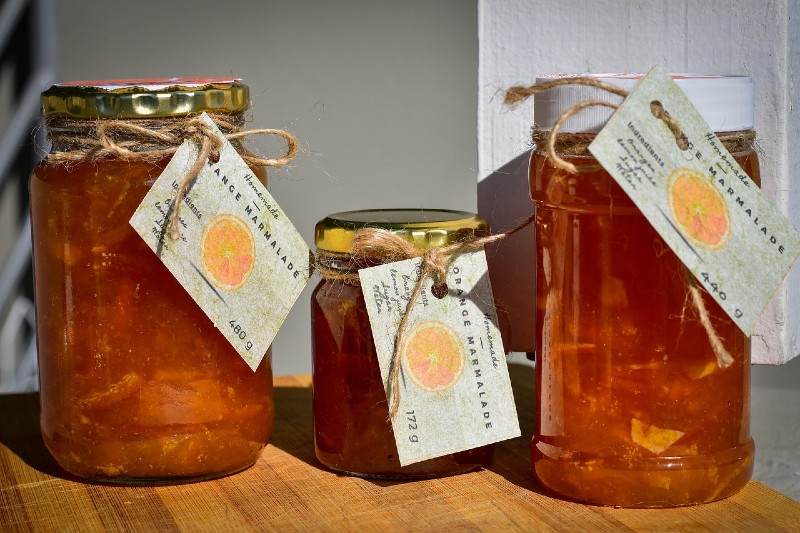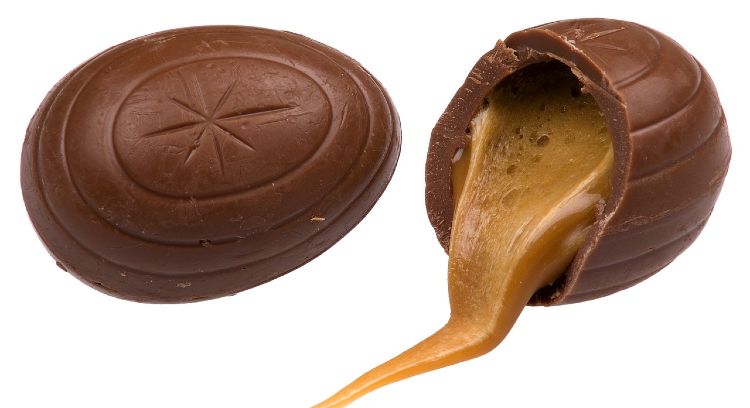Orange Marmalade’s Tasty Twins: Substitutes You Need to Try!
Orange marmalade, with its vibrant citrusy flavor and delightful bittersweet undertones, has long been a beloved condiment in kitchens around the world. Whether slathered on toast, drizzled over pancakes, or used as a glaze for meats, its unique taste adds a burst of sunshine to a wide range of dishes.
But what do you do when that jar in the corner of your fridge is empty? Or when you stumble upon a recipe that demands this citrusy concoction, but there’s not an ounce of it in sight? Furthermore, what if your palate seeks a twist or your dietary needs dictate a shift away from traditional orange marmalade?
This is where substitutes come into play. Just as the culinary world is vast and versatile, so are the alternatives to many of its ingredients. Whether it’s a matter of availability, a dietary choice, or merely a culinary experiment, there’s often more than one way to achieve that desired flavor or texture.
List of Substitutes for Orange Marmalade
Jams and Preserves: The Fruitful Alternatives
When thinking about orange marmalade replacements, the first and most intuitive options are often other fruit-based jams and preserves. These alternatives maintain the same fundamental characteristics of marmalade: a spreadable fruit consistency, a balance of sweetness, and often a hint of tartness. Here are some top contenders:
Apricot Jam
Apricot jam boasts a golden hue, reminiscent of sun-ripened apricots. It offers a similar consistency to orange marmalade but lacks the distinctive bitterness from the orange peel.
Best Used For: Baking, glazes for poultry or pork, and as a straightforward spread on toast or scones.
Flavor Profile: Sweet with a mild tartness.
Peach Jam
A jam that captures the essence of summer, peach jam offers a smooth texture. While it might not have the zestiness of orange, its fruit-forward taste can be a delightful change.
Best Used For: Desserts, fillings for pastries, and atop pancakes or waffles.
Flavor Profile: Predominantly sweet with hints of natural fruit acidity.
Lemon Curd
This is a luscious, creamy spread made from lemons, sugar, butter, and eggs. While not technically a jam or preserve, its intense citrus flavor makes it a noteworthy substitute for orange marmalade.
Best Used For: Tart fillings, layered in cakes, swirled in yogurts, or simply spread on toast.
Flavor Profile: Tangy, sweet, and creamy.
Citrus-based Replacements
For those who love the zesty punch of orange marmalade but are open to exploring other citrus flavors or simply need a variation due to unavailability, citrus-based compounds can be the answer. These options harness the power of citrus fruits, delivering tangy, sweet, and sometimes bitter profiles.
Mixed Citrus Marmalade
A concoction that combines a variety of citrus fruits, such as lemons, limes, grapefruits, and of course, oranges. This marmalade variant offers a multi-dimensional flavor that’s both familiar and exotic.
Best Used For: Toast spreads, glazes for meats, and as an ingredient in desserts that require a citrus kick.
Flavor Profile: A harmonious blend of sweet, tangy, and occasionally bitter, depending on the citrus fruits included.
Lemon or Lime Marmalade
Similar in preparation to orange marmalade, these alternatives use lemons or limes as the primary fruit. The end result is a more tart and zesty spread.
Best Used For: Enhancing seafood dishes, as a tart spread for baked goods, or stirred into teas for an added citrusy depth.
Flavor Profile: Tangy and sweet with the characteristic bitterness that comes from the inclusion of citrus peels.
Grapefruit Marmalade
This marmalade variant is for those who appreciate a more pronounced bitter edge. Grapefruit, with its unique balance of sweet and bitter, offers a refreshing alternative to the classic orange.
Best Used For: Pairing with strong cheeses on a cheeseboard, as a base for vinaigrettes, or as a distinctive spread for morning toast.
Flavor Profile: A mix of sweet, tart, and pronounced bitterness.
DIY Substitutes: Crafting Your Own Citrus Creations
For the adventurous souls and hands-on cooks, sometimes the best substitute is one you create yourself. DIY options allow for customization in flavor, sweetness, and consistency. Plus, there’s the added satisfaction of having made something from scratch. Let’s delve into some homemade alternatives to store-bought orange marmalade:
Orange Zest and Sugar Mixture
A quick and simple blend of fresh orange zest with granulated sugar. This mix captures the essence of orange without the jam-like consistency of marmalade.
Best Used For: Sprinkling over baked goods, stirring into tea or drinks, or as a garnish for desserts.
Flavor Profile: Intense orange flavor with a sugary sweetness.
Homemade Orange Reduction
Fresh oranges, sugar, and a touch of lemon juice are simmered until they reduce into a thick, jam-like consistency. This method offers the advantage of adjusting sweetness and consistency to one’s liking.
Best Used For: Any application where orange marmalade is typically used, such as spreads, glazes, or fillings.
Flavor Profile: Deep, concentrated orange flavor with a customizable balance between sweet and tart.
Orange-infused Syrup
A combination of orange juice, zest, sugar, and water, boiled down to a syrupy consistency.
Best Used For: Drizzling over pancakes, waffles, ice cream, or as a sweetener for cocktails and mocktails.
Flavor Profile: Sweet with a vibrant orange undertone.
Non-Citrus Alternatives
While the zesty allure of citrus is hard to replace entirely, there are times when our palate seeks a departure from the familiar or when dietary considerations come into play. For such moments, non-citrus alternatives can be a surprising and delightful choice. These substitutes provide sweetness and depth, often introducing entirely new flavor profiles to the mix.
Pineapple Jam
This tropical treat captures the essence of ripe pineapples, delivering a unique sweetness paired with a hint of tartness.
Best Used For: Tropical-themed desserts, fillings for pastries, or simply as an exotic spread on toast.
Flavor Profile: Sweet with mild tanginess, reminiscent of fresh pineapples.
Fig Preserves
Made from the lush and earthy fig fruit, these preserves offer a deep sweetness balanced by the natural complexities of the fig.
Best Used For: Cheese boards, glazing for meats, or as a base for desserts like tarts.
Flavor Profile: Rich and sweet with a slightly nutty undertone.
Apple Butter
Slow-cooked apples, often seasoned with spices like cinnamon and cloves, yield a spread that’s smooth, rich, and deeply flavorful.
Best Used For: Spreading on toast, muffins, pancakes, or as a filling in baked goods.
Flavor Profile: Sweet, slightly tart, with warm spice notes.
Honey or Agave Nectar
While not fruit-based, these natural sweeteners can sometimes serve as substitutes, especially when the primary purpose of the marmalade is to impart sweetness.
Best Used For: Sweetening beverages, drizzling over pastries or yogurt, or as a glaze for certain dishes.
Flavor Profile: Pure sweetness, with honey offering floral undertones and agave providing a milder, neutral sweetness.
Health-Conscious Substitutes: Wholesome Swaps for the Well-Being Enthusiast
In an era where wellness and mindful eating are at the forefront of many culinary choices, it’s no surprise that health-conscious substitutes are in demand. Whether it’s about reducing sugar, opting for organic ingredients, or simply choosing a more natural alternative, there are plenty of options for those seeking a healthier twist on orange marmalade.
Chia Seed Orange Spread
By using chia seeds, fresh orange juice, and a natural sweetener like honey or maple syrup, you can create a jam-like consistency without added sugars or pectin.
Best Used For: Spreading on toast, as a topping for oatmeal or yogurt, or even as a filling for pastries.
Flavor Profile: Fresh orange flavor with a hint of sweetness from the natural sweetener, complemented by the unique texture of hydrated chia seeds.
Sugar-Free Orange Marmalade
Made using sugar substitutes like stevia or monk fruit, these versions of marmalade deliver the citrusy zest without the sugar spike.
Best Used For: Anywhere traditional marmalade is used, especially beneficial for diabetics or those monitoring sugar intake.
Flavor Profile: Citrusy and sweet, with the exact flavor depending on the sugar alternative used.
Raw Orange Spread
A blend of fresh oranges, dates (or other natural sweeteners), and a touch of zest, this raw spread retains more nutrients by skipping the cooking process.
Best Used For: Cold desserts, smoothie bowls, or as a fresh spread on raw or sprouted bread.
Flavor Profile: Vibrant, fresh orange taste with natural sweetness from the dates.
Low-Glycemic Spreads
Using sweeteners like agave nectar or coconut sugar, these spreads aim to provide sweetness without causing a rapid spike in blood sugar.
Best Used For: Spreading, baking, or cooking where a low-glycemic index is desired.
Flavor Profile: Orange zestiness balanced with a mild, natural sweetness.
Exotic and Gourmet Alternatives
When it comes to food, sometimes venturing off the beaten path can yield the most delightful and memorable experiences. Beyond the usual and expected alternatives to orange marmalade, there exists a world of exotic and gourmet variants. These options may be rooted in global cuisines, feature rare ingredients, or present a gourmet twist to traditional recipes.
Mango and Saffron Preserve
This preserve combines the tropical sweetness of mangoes with the luxurious aroma of saffron threads. A truly gourmet experience.
Best Used For: Pairing with cheeses, spreading on artisanal bread, or as a unique topping for desserts.
Flavor Profile: Luscious mango sweetness with the delicate, aromatic undertones of saffron.
Kumquat Conserve
Kumquats, the tiny citrus fruits that can be eaten whole, are turned into a delightful conserve, often with added nuts or raisins.
Best Used For: Serving with roasted meats, as a tart spread, or swirled into yogurt.
Flavor Profile: Tangy with a hint of bitterness, balanced by the sweetness of the added ingredients.
Rose Petal and Orange Jam
The fragrant allure of rose petals combined with the zestiness of oranges creates a jam that’s both familiar and exotic.
Best Used For: Spreading on scones, as a filling for delicate pastries, or atop panna cotta.
Flavor Profile: Floral notes from rose harmoniously blend with the citrusy tang of oranges.
Passionfruit and Orange Gelée
A translucent, jelly-like spread that combines the tropical tang of passionfruit with the robust zest of oranges.
Best Used For: Drizzling over desserts, as a glaze for tarts, or as a vibrant addition to a breakfast spread.
Flavor Profile: Tart passionfruit perfectly complements the rounder citrus notes of orange.
Factors to Consider When Choosing a Substitute
Navigating the world of food substitutes, especially in a category as diverse as orange marmalade, requires a thoughtful approach. Your ultimate choice will depend on various factors, ranging from the specific culinary application to personal taste preferences. Here’s a closer look at some critical considerations:
Intended Use: Spreading vs. Cooking vs. Baking
- Spreading: For a simple spread on toast or biscuits, you might prefer substitutes that closely resemble the texture and spreadability of marmalade. Consistency matters; it shouldn’t be too runny or too thick.
- Cooking: When using marmalade in savory dishes, such as glazes for meats or stir-fries, it’s essential to consider the substitute’s flavor profile. Some alternatives might have added spices or ingredients that could alter the dish’s final taste.
- Baking: In baked goods, marmalade can impart moisture, sweetness, and flavor. The substitute’s melting point and water content can affect the texture of the baked product.
Desired Flavor Intensity and Profile
- Mild vs. Robust: Not all substitutes have the same flavor punch as orange marmalade. If you desire a subtle hint, a mild fruit preserve might be ideal. For a bolder taste, opt for substitutes with a pronounced citrus or tangy profile.
- Flavor Nuances: Consider any additional flavors in the substitute. For instance, a lemon-ginger preserve will bring both citrusy and spicy notes, which could influence the overall taste of your dish.
Texture Requirements: Chunky vs. Smooth
- Chunky: If you relish the bits of rind in orange marmalade, you’d probably prefer a substitute with a similar texture. Fruit preserves with chunks of fruit or peel might be more to your liking.
- Smooth: For recipes or tastes that require a smoother consistency, gelées or finely processed jams could be more suitable.
Sugar Content and Sweetness Preferences
- Low Sugar: Health concerns or dietary choices might steer you towards low-sugar or sugar-free alternatives. These are often sweetened with natural alternatives or sugar substitutes like stevia or monk fruit.
- Natural Sweetness: Some substitutes derive their sweetness from the fruits themselves or from added natural sweeteners like honey or maple syrup. These options often offer a more complex flavor profile than those sweetened with refined sugar.
- Traditional Sweetness: If you’re looking for a substitute that’s as sweet as conventional orange marmalade, regular fruit jams or preserves might be your best bet.
Tips on Using Substitutes
While many alternatives might look like a straight swap for orange marmalade, the nuances in their flavors, sweetness levels, and textures can influence the outcome of your dishes. Here are some handy tips to guide you through the process:
Adjusting Sweetness Levels
- Balancing with Additional Sugars: If you find your substitute is less sweet than you’d prefer, especially in desserts or baked goods, you can easily adjust by adding a bit of sugar, honey, or maple syrup. Do this gradually, tasting as you go, to ensure you don’t oversweeten.
- Using Lemon Juice: On the other hand, if your substitute is overly sweet, a splash of lemon juice can help. The tartness of the lemon balances out the sweetness, bringing it closer to the tangy profile of marmalade.
Ensuring Consistent Texture
- Thickening: If your substitute is too runny for your liking, you can simmer it on low heat until it reaches your desired consistency. Another option is to add a bit of chia seeds, which expand and gel, thickening the mixture naturally.
- Thinning: Should you find your substitute too thick, especially for applications like glazes or sauces, dilute it with a little water or fruit juice. Heat it gently while stirring to achieve a uniform texture.
Pairing Suggestions
- Citrus-based Substitutes: These often pair well with seafood, chicken, and pork. The tangy notes complement the natural flavors of these proteins. In desserts, they work well with chocolate or creamy dishes like panna cotta.
- Berry Jams or Preserves: These can be delightful with cheeses, especially brie or camembert. In desserts, consider pairing with vanilla-based items like ice cream or custards.
- Exotic or Gourmet Variants: Given their unique flavor profiles, these are excellent on artisanal breads, paired with gourmet cheeses, or used as a topping for upscale desserts. Some might even work well as an accompaniment to specific wines.
- Low Sugar or Sugar-free Options: These are versatile and can be used just like their sugared counterparts. However, they might be especially good in breakfast dishes like oatmeal or yogurt, where you can control the sweetness level.
Remember the Role of Color
Different substitutes might impart varying colors to your dishes. For instance, a strawberry jam will lend a reddish hue, while a lemon gelée might be more translucent. Keep this in mind, especially if you’re preparing dishes where appearance is crucial.



